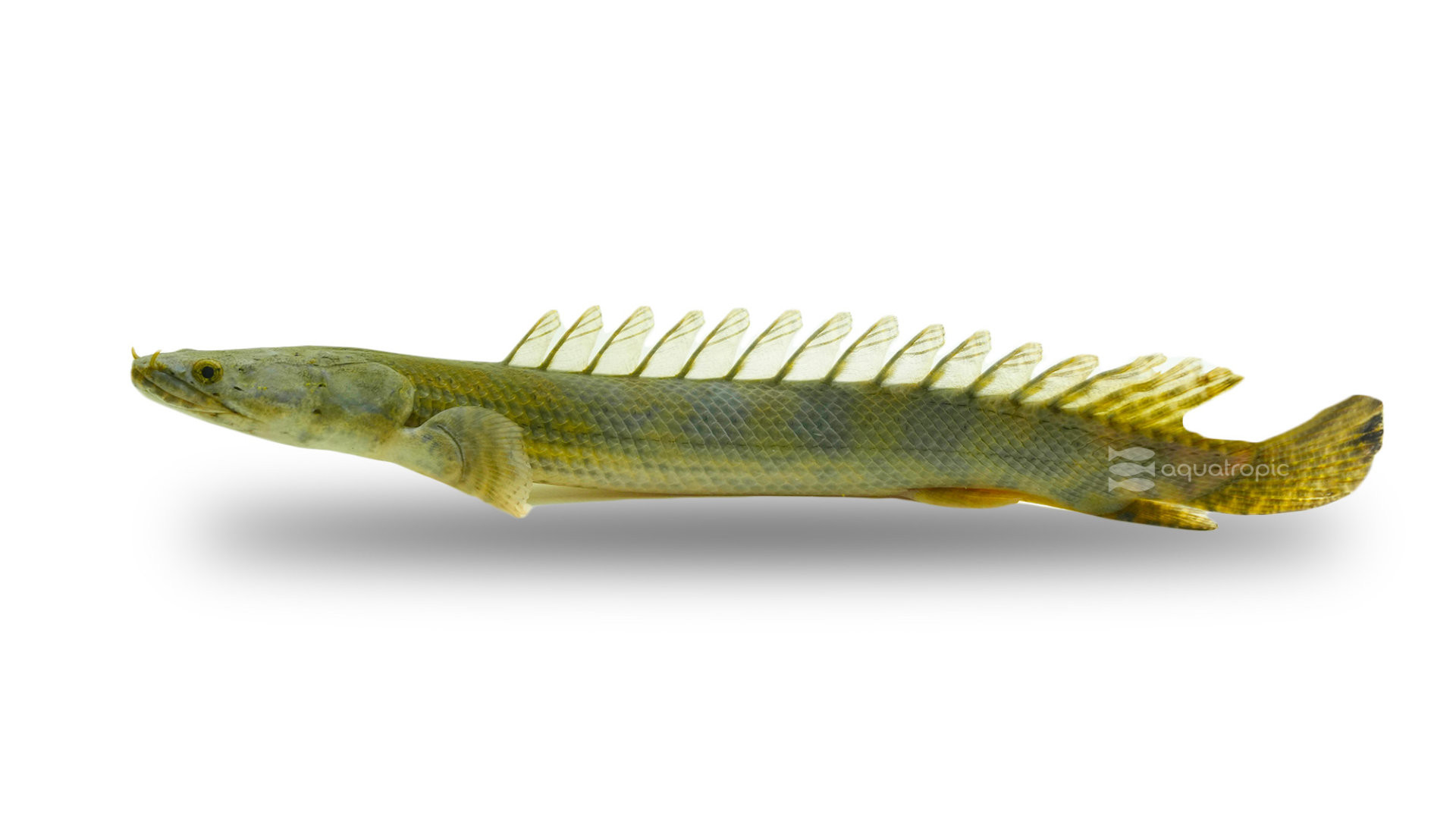The Palmas Bichir (Polypterus palmas)

The Palmas Bichir (Polypterus palmas) is a member of the family Polypteridae, better known as the Bichirs (pronounced bee-sheers). Poly (meaning many) and pteron (pterus) wings is in reference to the finlets that run down the back of this prehistoric fish. Like all Bichirs, coloration is dependent on environment and substrate color, with darker substrates yielding more pronounced coloration. Generally, Palmas Bichirs have darker patterning dorsally and lighter underbellies. Polypterus palmas is also frequently called “Shortfin Bichir” and “Marbled Bichir”.
The Palmas Bichirs come from the rivers of coastal Western Africa, from Senegal in the North to Liberia in the South. Like most Bichirs, they prefer slow moving habitats in either wide rivers or marshy places with plenty of structure to hide and hunt in like driftwood and vegetation. Most the Palmas Bichirs are wild caught because, while members of this family are frequently bred in aquaria, (including a subspecies of this Bichir) the Palmas Bichir is not commercially available very often.
In the wild, Polypterus palmas breed in the rainy season. Females and males will engage in a very cool dance where the male will catch eggs with his anal fin while the female releases them. The male will then fertilize the eggs, and then scatter them into vegetation (home aquarists also use mops to good effect). If you as a hobbyist are attempting to breed them, at this point, parents should be removed from the aquarium, as they are likely to eat their own eggs. The eggs will hatch in a few days and the baby fish should be free swimming within a week after hatching. They are hungry, but aren’t incredibly mobile, or adept at catching prey so appropriately sized, easily caught live foods are required to ensure that they get enough to eat. Home aquarists report best success getting adults to breed in very soft water.
An adult Palmas Bichir (or a couple of them) will need a 55-gallon aquarium to be comfortable. The substrate should be fine, as they are bottom feeders and will ingest some sand. Dark colored substrate, (red and black are favorites) will really accentuate the patterning and coloration of these Bichirs. The aquarium should be dimly lit, or have floating plants and there should be room for the fish to stretch out on the sand and they can get just over a foot long. They should also have plenty of driftwood or similar structure to explore and swim through. These fish are adept escape artists, so a tight-fitting lid is always recommended.
In regards to housing them with other fish, Palmas Bichirs are pretty peaceful, but are also sneaky nocturnal predators, with a penchant for eating unsuspecting fish that are small enough to fit in their decent sized mouths. Keep this in mind when choosing tankmates; good choices would be other Bichirs, Shovelnose Cats, Datnoids, Plecos, Knifefish etc.
A very interesting tidbit about Bichirs is that they can (when need arises) breathe atmospheric air. They can utilize part of their swim bladder as a lung and can live for extended periods out of water as long as it stays moist. They can actually drown if not given access to air!
The Palmas Bichir is a predatory fish that is not picky (as previously indicated). A high-quality sinking pellet like the “Freshwater Complete” from Nutramar is a good staple to form the foundation of the diet. Meaty frozen foods such as market fish or shrimp are good options to add nutrition and balance out a diet. The Bichirs will also relish sterile live foods, though because they have terrible eyesight and usually hunt by smell, they will generally sneak up on these at night and thus it is frequently not the most riveting predator to watch.
The Palmas Bichir is a more interesting option in comparison to some of the more commonly available members of the genus Polypterus without having to have an enormous aquarium to house a huge fish. This wildly hardy fish is one of the smallest and most active Bichirs available to the home hobbyist, and thus a great fish for beginning hobbyists.
Advanced aquarists can be challenged to (and should) try their hand at spawning these fish, as it surely can be done in aquaria, given the correct conditions and time. Contact your local fish store and ask them to order you some sustainably sourced Palmas Bichirs from Aquatropic today!